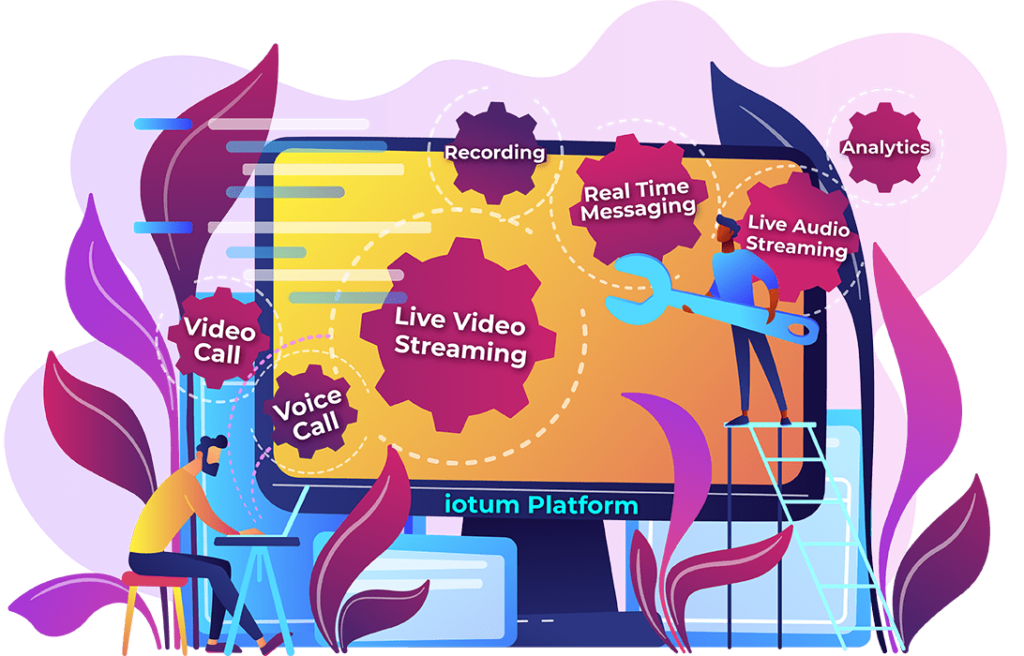 As a virtual trainer, you rely on the internet and technology to connect with eager learners. Even before the world went on pause, people were gravitating towards online learning if not for the flexibility and convenience, then for the exceptional content available from niche to mainstream.
As a virtual trainer, you rely on the internet and technology to connect with eager learners. Even before the world went on pause, people were gravitating towards online learning if not for the flexibility and convenience, then for the exceptional content available from niche to mainstream.
Now compounded by how people are working from home and looking to change careers or uplevel their skills in the workplace, it’s not surprising how virtual training has exponentially exploded. Especially since it can be just as effective as learning in real life!
But there’s an effective way to do it, and a not-so-effective way to do it. Successfully keeping learners engaged, motivated, and inspired is an art. Here are a few tips for virtual trainers who want to conduct a virtual training session that kicks learning into overdrive!
1. Be Prepared Instead Of Sorry
Just as you would in a normal training scenario, you’d prepare beforehand and know your content inside and out. You would practice and master your structure and material then work on your presentation skills, enunciation, body language, delivery, etc.
The same approach applies in an online space except you prepare by not only knowing your content but by having good command of the platform you’re using. Knowing how to host a remote presentation, set up a slide show, open up break rooms and more, will put you in a good position to teach in a virtual classroom without fail.
2. Know How To Handle Complications
There are times where glitches will happen, WiFi will stop, batteries will die. Sometimes it can be as simple as naming it, “Thanks for your patience with the loud trucks in the background!” Other times, it might be about having the forethought to keep an extra charger nearby, the WiFi password on hand or brainstorming an action plan to keep everyone entertained if your connection were to drop.
 3. Initiate Pre-Gaming
3. Initiate Pre-Gaming
Most of the learning happens “in the classroom” but if you want to make an impact and inspire learners, encourage activities that happen before and after the session. It doesn’t have to be a big ask. In fact, it can be a video you send out asking them to think about a question, or a poll that asks what they’re hoping to get out of the training. It could be an online development journal comprising daily, weekly or monthly check-ins to help them see their progress and patterns.
4. Greet Participants
Consider logging on 15 minutes early or staying on 15 minutes later for live sessions to help iron out wrinkles about course content. This is the perfect opportunity to answer questions and check in on learners.
Imagine you’re there in real life saying hello to students as they enter the class. Call out a name, comment about their virtual background, ask people to leave a comment in the chat. There are many ways to engage people right from the get-go!
5. Discuss Expectations
Remember that you are catering to learners of different ages in a variety of locations at different points in their life and career. Some may be comfortable using technology and others might struggle to get a handle on it. At the beginning, during orientation or in a virtual handbook (or both!), set expectations regarding:
- Camera settings: on or off?
- Participant muting (preferable with a group of 5 or larger)
- How many hosts?
- Grace period; How long until the session gets underway after start time? 5 mins? 10 mins?
6. Resist Relying On Lecturing
It’s natural to feel the urge to transmit your knowledge via lecture, but in an online world using video conferencing, changing it up will ensure your content lands with learners. That’s not to say a lecture isn’t productive or helpful, instead, think about other ways you can help make it more interactive.
Use videos and activities to help illustrate your point. Try using a timer that goes off every 20 minutes during your lecture as a prompt to remind you to ask questions or include an activity that invites multiple participants to enact.
7. Encourage Engagement
After a lecture or if you notice participants becoming restless, come up with a creative solution to keep engagement and collaboration high. Not only will this maintain momentum, it will work to promote integration of the content. Include breakout rooms that invite participants to share 30 seconds of their thoughts regarding the content; Ask them to share their reactions in the chat or start a Facebook group for further discussion and support after hours.
8. Run Through Your Session
Before you actually go live in front of your learners, try it out to see how you sound. If you want to up the ante, record yourself and see where you might want to improve. Is your voice clear? How much time are you spending looking at your notes? What’s your body language like? Are you bored or excited when you watch yourself? There is much value in watching a recording of yourself to see how you react because most likely, others will have a similar reaction too!
9. Ask For Feedback
Having learners fill out an evaluation form whether anonymous or not allows you to make changes and course-correct based on relevant feedback. This will shape the efficacy of your training to determine what is helping and hindering student learning.
 So you feel confident navigating the technology and you know you have what it takes to teach by transmission in a way that is effective and exciting. Here are a few creative virtual training ideas to add flow to your virtual training session:
So you feel confident navigating the technology and you know you have what it takes to teach by transmission in a way that is effective and exciting. Here are a few creative virtual training ideas to add flow to your virtual training session:
1. Mix Up How You Educate
Offer course material via slides, breakout rooms, short essays, polls, quizzes, Q&A breaks, quizzes, and activities. Also include music, dance breaks, and videos to chunk down the content for more digestible learning.
2. Draw From A Real Life Problem
Introduce a problem that is germain to the content, and ask participants to solve it. This could look like calling upon 2-3 participants and getting them to work on it while others watch; Or designating breakout rooms for private problem solving then sharing with the whole group after.
3. Use The Online Whiteboard
Highly creative, collaborative and fun to use, the online whiteboard is a great feature for participants to share images, links, media and videos and then comment on them in real time (or recording to watch later). Try posing a question on the online whiteboard at the beginning of the session and inviting participants to answer or share a relevant meme.
Work with FreeConference.com to elevate how your virtual training session is received by learners. Its feature-rich technology supports all sorts of training across different industries from finance to healthcare, merchandising and more. Connect to anyone from anywhere at any time for free.


